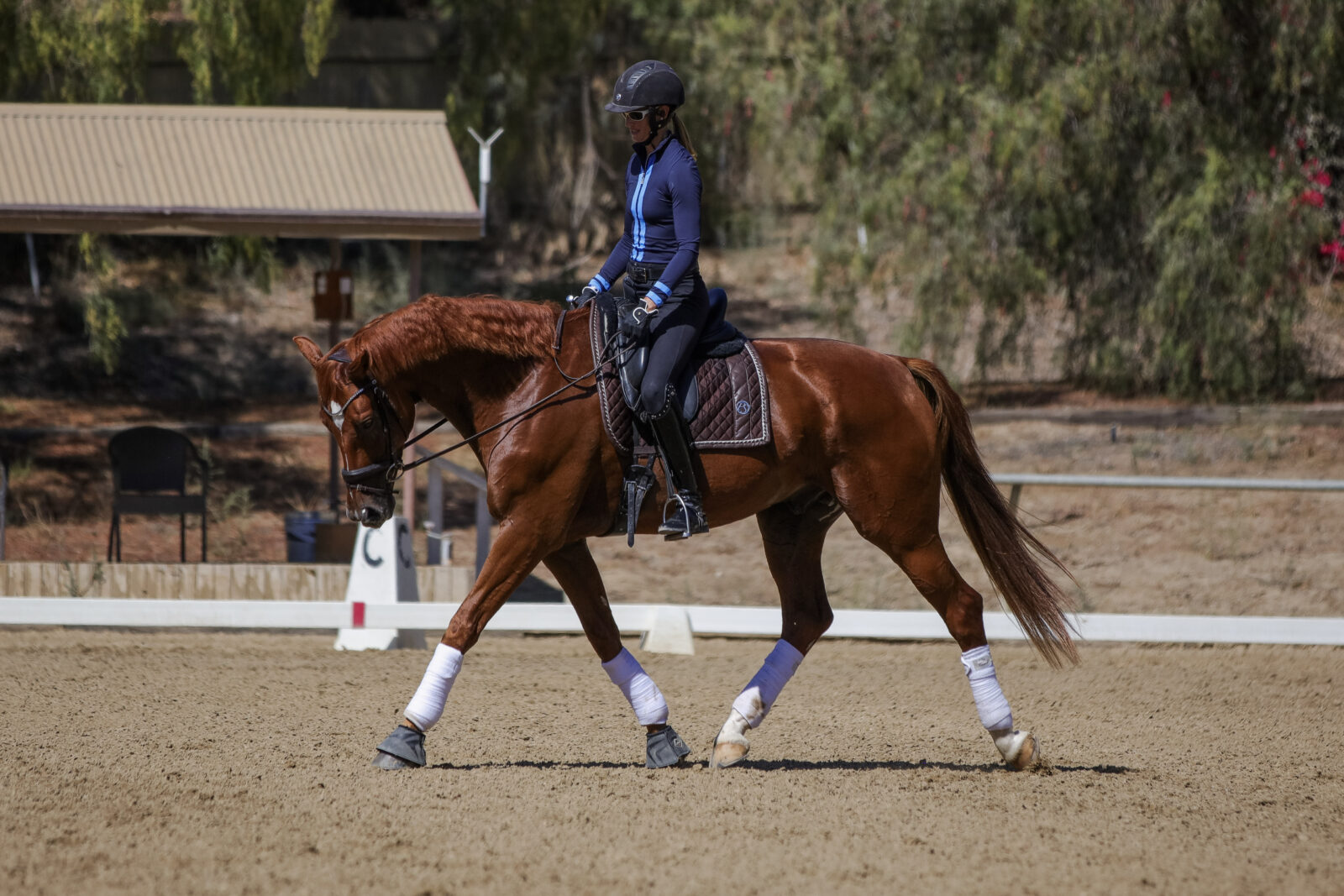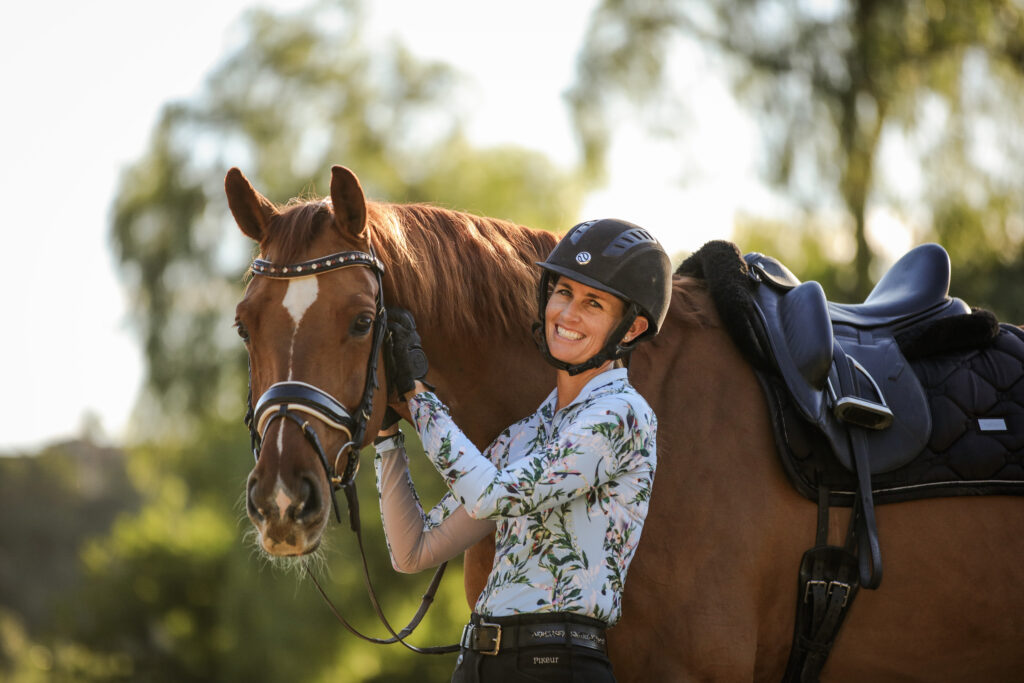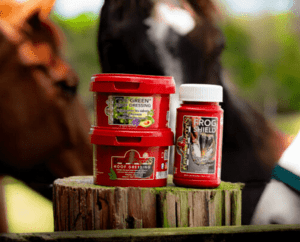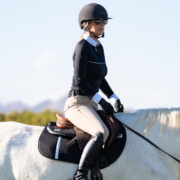Which Comes First: Relaxation Or Acceptance Of The Aids?

Ever had a riding theory question you couldn’t find the answer to? Or don’t have a go-to coach to ask? In this recurring segment, Amelia Newcomb is here to answer anything about your riding and dressage needs.
There’s this debate over which comes first: “acceptance of the aids” or “relaxation” in riding dressage. Both are important to achieve a harmonious ride, but is it vital that one comes before the other?
“Great question, it’s important to remember that both ‘acceptance of the aids’ and ‘relaxations’ are scales and your horse is going to experience different levels of them throughout their training and they work in tandem to make each other better.
Let’s break it down:
When we talk about ‘acceptance of the aids’ or being ‘on the aids’ it means that the horse does what we ask, when we ask, with the degree of response we were expecting.
When we talk about relaxation, it often refers to the mental state of your horse. The second rung of the Training Scale used to be “Relaxation,” but it was changed to Suppleness as it is a more accurate translation of the original German word for the second rung of the pyramid “Losgelassenheit” which doesn’t have a direct English translation but includes both the mental and physical states of relaxation and bend in the body; you need both mental and physical suppleness in order to have true relaxation from your horse. As suppleness encompasses both the mental AND physical states I refer to mental relaxation as suppleness.

So how do they work together? Like all animals (humans as well) relaxation/suppleness comes from confidently knowing the outcome of a question or task. So the more times you are consistent with how you ask your horse a question, they give the correct response, and you take the aid away, the more relaxed your horse will become.
So going back to your question: “…but is it vital that one comes before the other?”
Both being on the aids and relaxation are essential but when teaching something new or increasing the level of difficulty of a movement, there may be an element of relaxation/suppleness lost at first. First, you start with a horse that is answering the question correctly (i.e. being on the aids; this typically is what your warm up is for) and is supple. Then you introduce something a little more difficult, the horse being on the aids, will attempt it, but there will generally be a loss of suppleness. Then through repetition, time, and consistency, the suppleness/relaxation will come back. The key is to build in the relaxation at each step, and not increase the difficulty too fast- even if the horse is still on the aids. Ideally, when we are trying something a little harder, we get the horse back to the original state of suppleness/relaxation that was achieved in our warmup. If we can’t, it usually means that we have increased the level of difficulty too fast for the horse on this particular day or stage of their training and then often they go off the aids because they are too nervous or unbalanced to physically comply. If that happens, go back to something you know your horse does well and get the relaxation back from there.
That is why horse training takes so long, because we have to build the relaxation through many layers and increase the difficulties of the aids slowly.
So in conclusion, relaxation needs to come before we can increase the level of difficulty, but it is through the horse being on the aids that they can become more relaxed as we progress with our training.”
Want to explore this topic further? Try these videos:
Is my horse relaxed and supple?
3 groundwork exercises for a relaxed and focused horse
Amelia Newcomb is a USDF Gold medalist. Based in Somis, California, she incorporates complete dressage training from starting the young horse through the FEI levels in both her in person and online programs. Amelia works to develop a trusting and confident relationship between horse and rider. Her approach incorporates all aspects of horsemanship from basic groundwork to advanced dressage movements. Amelia’s mantra has always been “Dressage for All”, which is evident in both her in person and online coaching. With a successful YouTube video library of hundreds of free educational videos, over 220,000 subscribers (and counting!), and thousands of students enrolled in her online USDF accredited courses.


